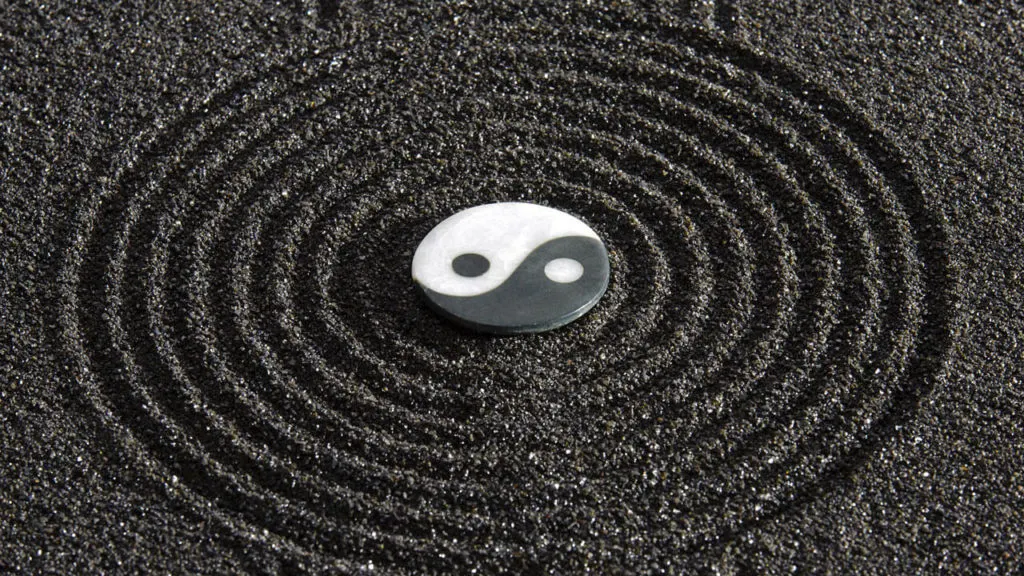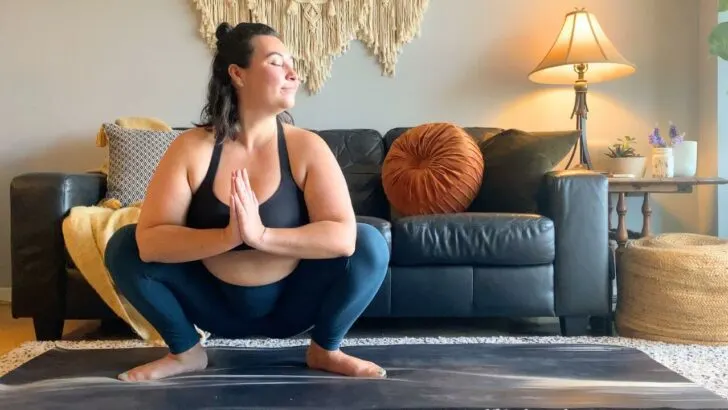I want to convince you that yin is not only worthy of a try but should become a regular practice for you. No, it will not replace your more active style of yang yoga, but it will complement whatever style of exercise that you’re already doing.
As a certified yin yoga instructor, I am constantly educating people on how a slow practice is essential both physically and mentally. Don’t believe me? A study that followed 100 students who practiced yin yoga in a 5-week program compared results to those who didn’t practice yin. The results showed a decrease in anxiety, insomnia, depression, and stress. Plus, physiological and psychological risks associated with noncommunicable diseases such as cardiovascular disease and cancer also showed a significant decrease.
Convinced to try yin yet?
1. Increases flexibility and range of motion
Yin targets your deep connective tissue and joints – both of which you don’t access in an active style of yoga class. This connective tissue, called fascia, is like a shrink wrap that covers your entire body and weaves in and out between everything. This is the type of tissue that is activated during yin yoga poses that will create the length and elasticity that will allow your body to move more freely. By stretching into your fascia, you’re not only lubricating it so that it moves more easily, but you’re also training your body to know how far it can move. And no, yin will not overstretch your ligaments if you practice as you should…with care. This is a common yin misconception that shouldn’t keep you from trying this practice for yourself.
2. Reduces stress and anxiety
The study I referred to above demonstrated that a regular yin yoga practice can reduce stress and anxiety significantly. This is because by practicing yin you’re putting healthy stress on your connective tissue but easing the stress and anxiety in your mind through creating space. Holding yin poses activates your parasympathetic nervous system, the system that tells your body and mind that it’s okay to relax and be at ease, the complete opposite of fight or flight which many people (including myself) get stuck in.
Since yin yoga focuses on surrendering and allowing the body to gradually move into each pose without force, it encourages your mind to slow down as well. This space in the mind gives you time to contemplate, reflect, and process emotions and thoughts that may arise instead of stuffing them down to deal with later.
3. Boosts circulation
Since yin focuses on your fascia and has such an impact on your whole body, stretching it and hydrating it (which you do by stretching it for long periods of time of more than 90 seconds), you’re releasing stiffness which will help circulation. Focusing on your breath as you stretch your fascia brings more oxygen not only to the deep connective tissue but also to the joints and ligaments that you’re working into as well, thus increasing circulation.
Reducing stress is also an aid in increasing circulation, which yin also does!
4. Balances mind, body, and emotions

I know that you’ve seen the yin and yang symbol which shows that both are needed for balance. Including yin yoga in your regular yoga practice or in addition to it will help bring more balance to your mind, body, and emotions.
Yin is really about learning how to lean into and let go, to surrender. It focuses on aspects of yogic philosophy that aren’t touched on as much as or not at all in yang classes. By practicing both yin and yang you’re able to tap into the space that yin yoga gives you and gives your body a break from the strengthening done in a yang class.
5. Sleep better
It’s not uncommon to hear snoring in a yin yoga class as it’s so relaxing that people fall asleep! This is why yin is often practiced later in the evening as it promotes relaxation by letting go of yang energy that was cultivated in the body and mind throughout the day.
6. Cultivate patience
There are three principles that are practiced in yin yoga. One is hold the pose, and another is be still. Both of these principles are really skills that need to be practiced many times! Luckily we have yin to thank as the entire practice helps you to develop these skills that can easily be taken off of the mat to practice in your daily life. That traffic that you’re stuck in on your way home from work? It requires patience and now your yin practice is benefiting life off of the mat!
What’s next?
- Add yin into your yoga practice! Try classes with me on YouTube.
- Learn how to do yin yoga poses.
- Find balance with yin and yang yoga classes in my Journey Home yoga adventure!

